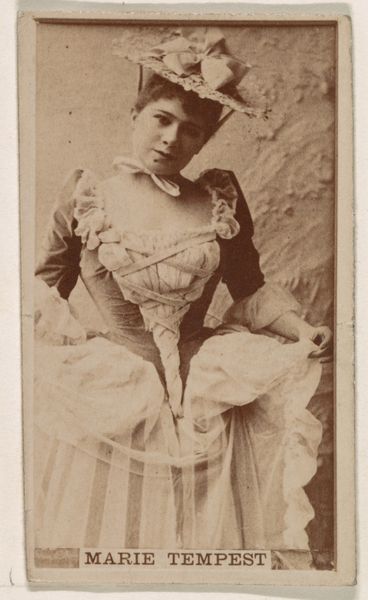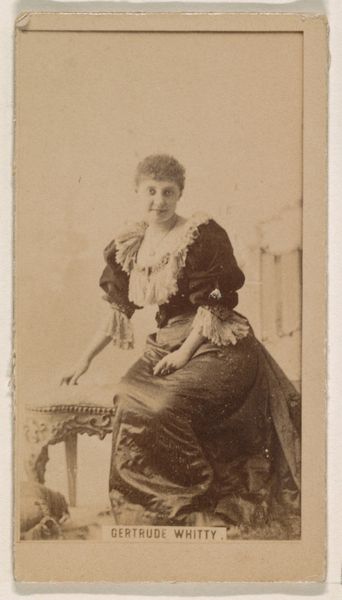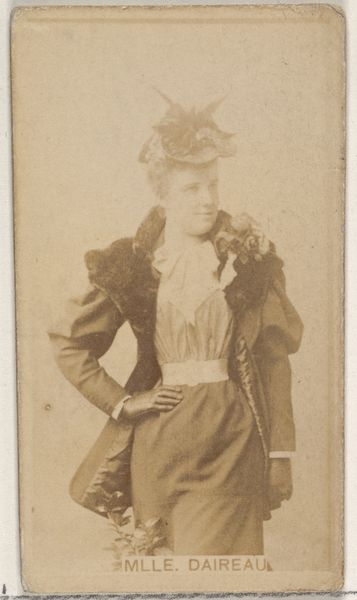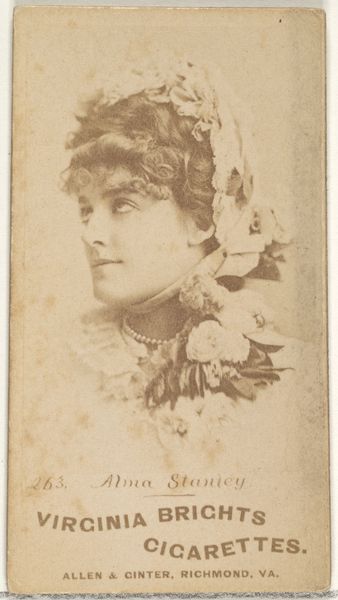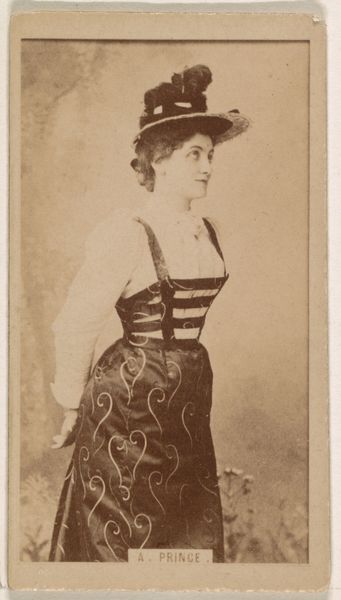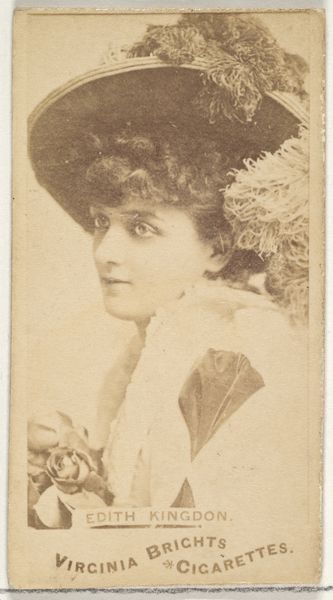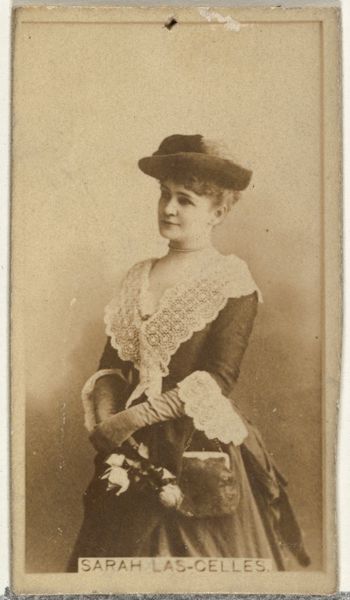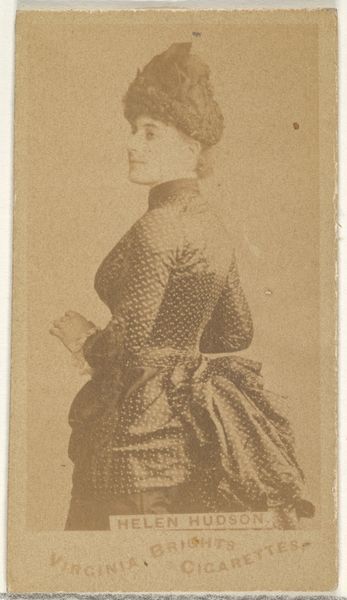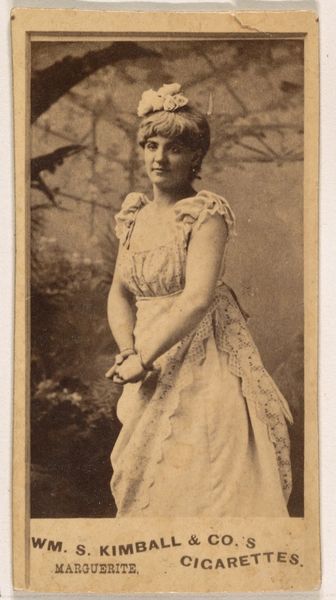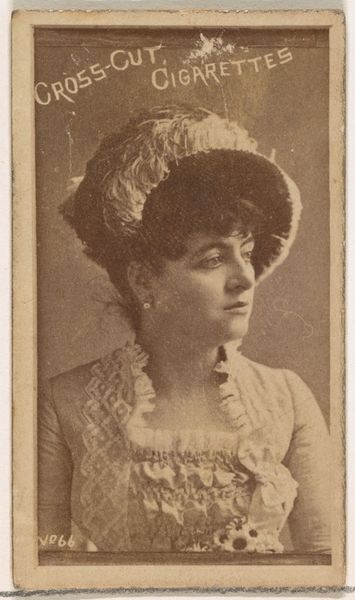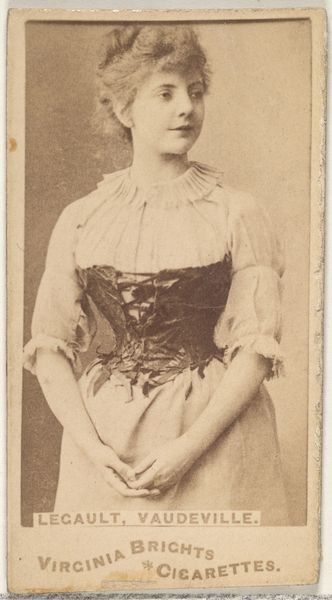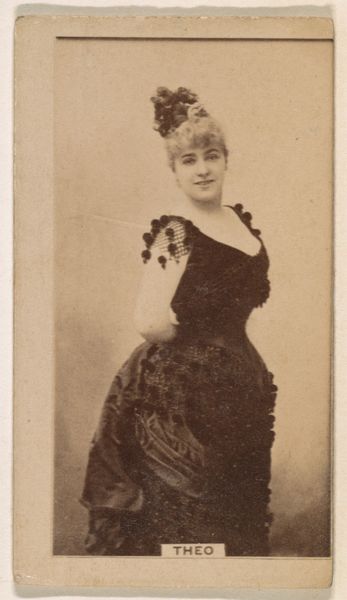
May Robson, from the Actresses series (N245) issued by Kinney Brothers to promote Sweet Caporal Cigarettes 1890
0:00
0:00
drawing, print, photography
#
portrait
#
drawing
# print
#
photography
Dimensions: Sheet: 2 1/2 × 1 7/16 in. (6.4 × 3.7 cm)
Copyright: Public Domain
Curator: This is a trade card from 1890 featuring the actress May Robson. It's part of the "Actresses" series, N245, produced by Kinney Brothers to promote Sweet Caporal Cigarettes. It’s currently part of the collection at the Metropolitan Museum of Art. Editor: There’s an immediate formality about this sepia portrait that speaks to its time, a seriousness in her expression despite the obvious adornments and attempts to convey some social prominence. Curator: Precisely. Trade cards such as this one functioned within a growing culture of celebrity. The late 19th century witnessed an increased interest in actresses and their private lives, fueled by a burgeoning entertainment industry. These cards were inserted into cigarette packs as promotional items and collectables, contributing to a broader cultural fascination with female performers. Editor: I see what you mean, these actresses, by their inclusion as 'tradeable commodities,' were certainly making inroads into broader recognition—yet at what cost to their own representation? Did Robson herself have any agency in the image selection, the poses adopted? Did she consent, even? The power dynamics at play between the actress, the company, and the consumer feels crucial here. Curator: Good questions, though concrete answers remain somewhat elusive in historical records. The very act of distributing such images through tobacco products hints at the complex negotiations of femininity, consumerism, and nascent celebrity culture. Tobacco advertising, often intertwined with ideals of beauty, social success, and femininity. For a female star, connecting herself with the Kinney Brothers Tobacco Company may open some interesting avenues in the social world. Editor: Indeed, and viewing the image through the lens of performance theory and feminist criticism allows us to deconstruct how Robson's image participates in and perhaps resists prevailing patriarchal gazes. How did Robson feel about being presented this way in particular? What negotiations were involved in crafting this version of herself that now appears printed within Sweet Caporal Cigarettes? These points surely affected a lot on the reception this actress received during the time, the social interactions. Curator: And furthermore, consider the politics of representation. These actresses came from varying socioeconomic backgrounds. We could probably learn a great deal about the public perceptions and accessibility through her attire. I think it offers important insights to discuss how class, race, and gender intersect in this specific historical moment. Editor: Absolutely, understanding how her presentation mediates cultural perceptions is important. Considering the context around it opens opportunities for wider consideration regarding tobacco usage or trade cards within our world. Curator: I couldn’t agree more!
Comments
No comments
Be the first to comment and join the conversation on the ultimate creative platform.
